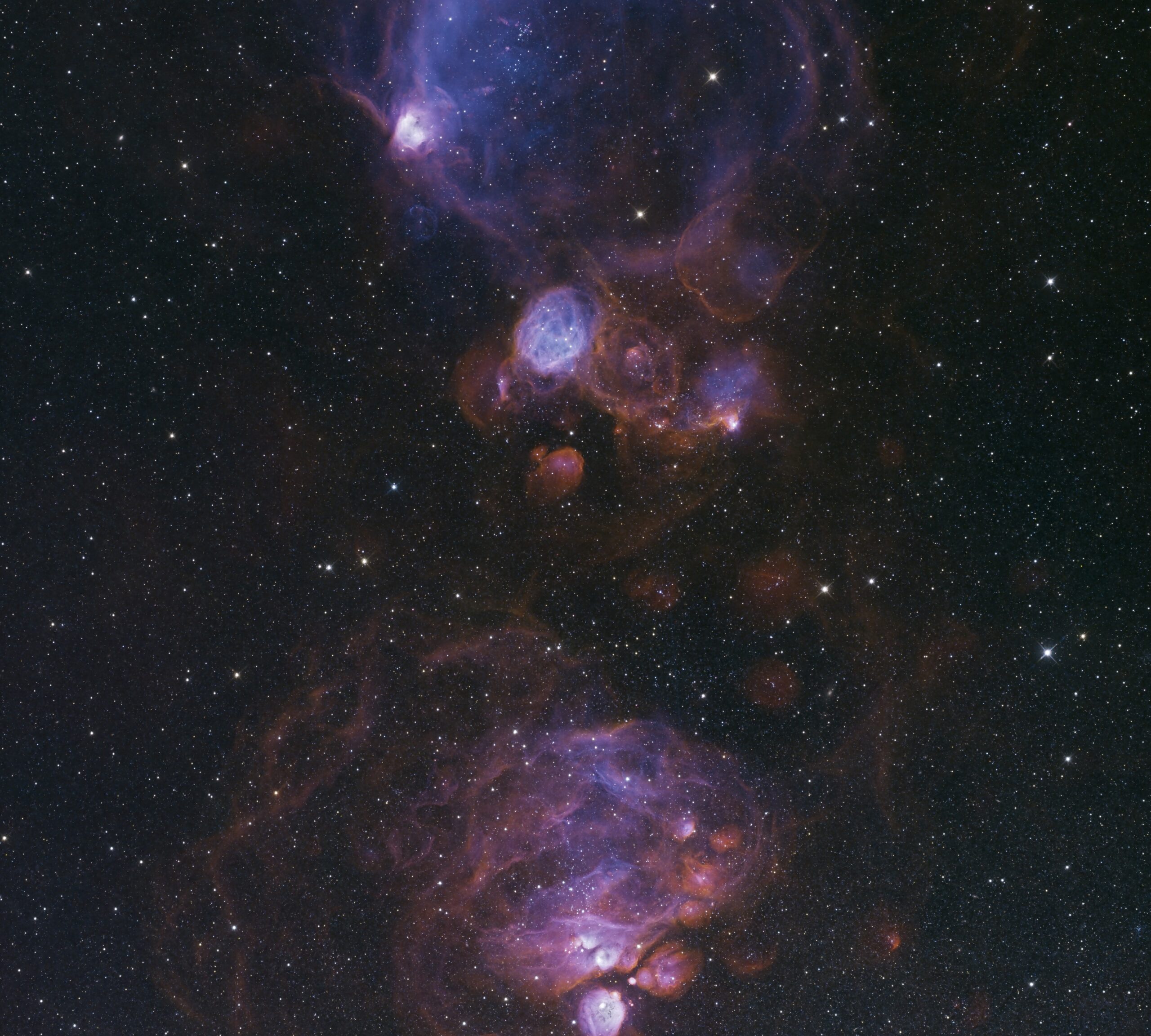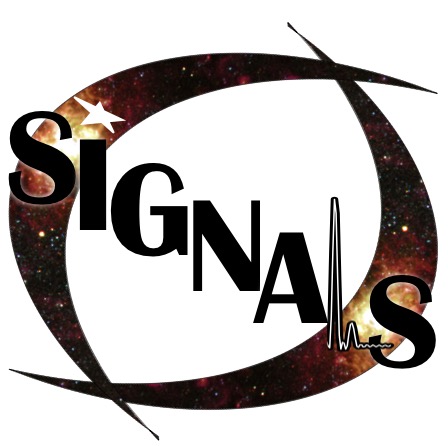SIGNALS is the largest survey of extragalactic HII regions to date.
It uses the Canada-France-Hawaii Telescope at Mauna Kea Observatory and an imaging spectrograph called SITELLE to measure emission lines in over 50,000 HII regions in ~40 galaxies in the local universe.
THE SURVEY
The Star-formation, Ionized Gas, and Nebular Abundances Legacy Survey (SIGNALS) at the Canada-France-Hawaii Telescope at Mauna Kea Observatory is investigating the interplay between star formation and interstellar gas.
SIGNALS is currently collecting data for HII regions in ~40 galaxies in the local universe at impressive spatial resolutions across their entire disks. This new data will tell astronomers how diverse local environments affect the star formation process, contributing to many topics in astrophysics from stars to cosmology.
How the Survey Works
SIGNALS studies extragalactic HII regions — pockets of gas and dust being ionized by newly formed massive stars. The light from these stars ionizes the surrounding gas, temporarily removing electrons from the atoms that make up the gas. Those electrons then recombine with the atoms, emitting light in the process with characteristic colors for each element.
SIGNALS collects this light and analyzes its strength and spatial location to learn more about the stars and gas. Astronomers can use this data to learn more about the kinds of stars ionizing the gas, what elements make up the gas and how they are distributed in a galaxy, and how the gas responds to the stars dynamically, among other things.


Survey Targets
SIGNALS selected galaxies to observe HII regions in as many different galactic environments as possible. In order to increase the spatial resolution, these galaxies had to be in the local universe — within 10 Mpc.
Necessarily, this required not selecting targets that did not have many HII regions, those that lots of light-obscuring dust, and those galaxies oriented edge-on to Earth.
Even with these constraints, the galaxies selected span a wide range of global abundances, brightness, stellar densities, and galactic environments, making a truly uniform and homogeneous dataset.
Telescope & Instruments
To perform the SIGNALS survey, astronomers at the CFHT designed an instrument that provides gathers light from across a wide field of view, much bigger than other competitors. However, unlike other cameras that simply take a picture at one wavelength, this camera has spectrographs that break the light into its individual wavelengths in each pixel of the image.
This spectral coverage, combined with our small spatial resolution, allows astronomers to study galaxies at as small scales as 3 pc for the nearest galaxies.
SCIENTIFIC REQUIREMENTS
SIGNALS science verification started in 2017, and the SIGNALS observations began in 2018. The baseline parameters of the survey are:
| Field of View | 11 arcmin by 11 arcmin |
| Wavelength Coverage | SN1 (363-386 nm), SN2 (482-513 nm), SN3 (647-685 nm) |
| Spectral Resolution | R = 1000 (SN1 & SN2), R = 5000 (SN3) |
| Exposure Time per Field | Minimum of 2 hours |
| Galaxy Selection Criteria | (1) Star-forming galaxies; (2) -22° < Dec < +62°; (3) D ≤ 10 Mpc; (4) limited amount of dust on the line of sight; (5) limited crowding of the HII regions (inclination ≤ 71°) |
| Science Goals | (1) Quantify the impact of the surrounding environment on the star formation process; (2) link the feedback processes to the chemical enrichment and dynamics in the surroundings of star-forming regions; and (3) measure variations in the resolved star-formation rate with respect to indicators used to characterize high-redshift galaxies. |
MEET THE TEAM
SIGNALS is a large multi-national collaboration that involves astronomers, postdoctoral researchers, graduate students, and others from 17 countries.
